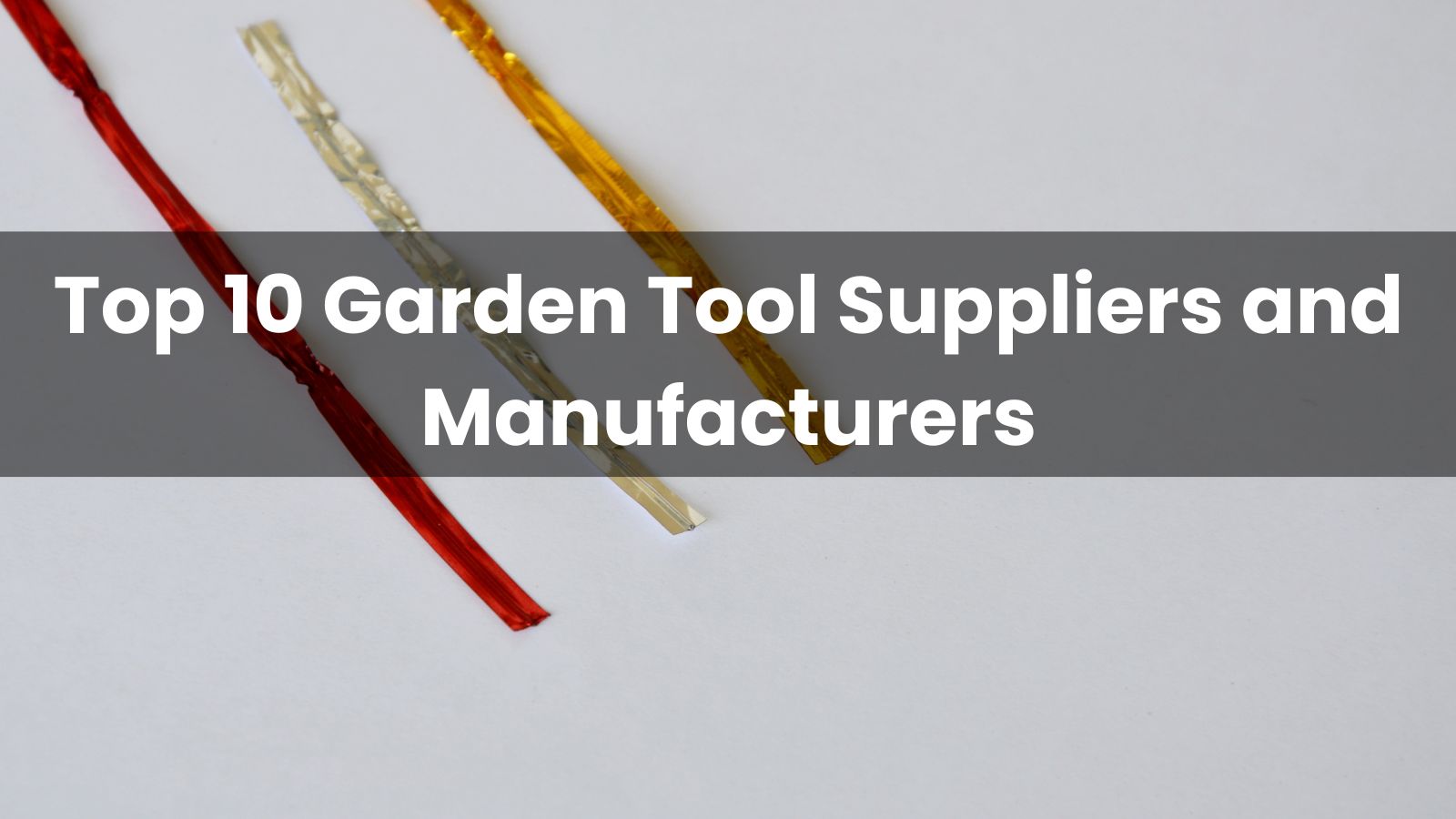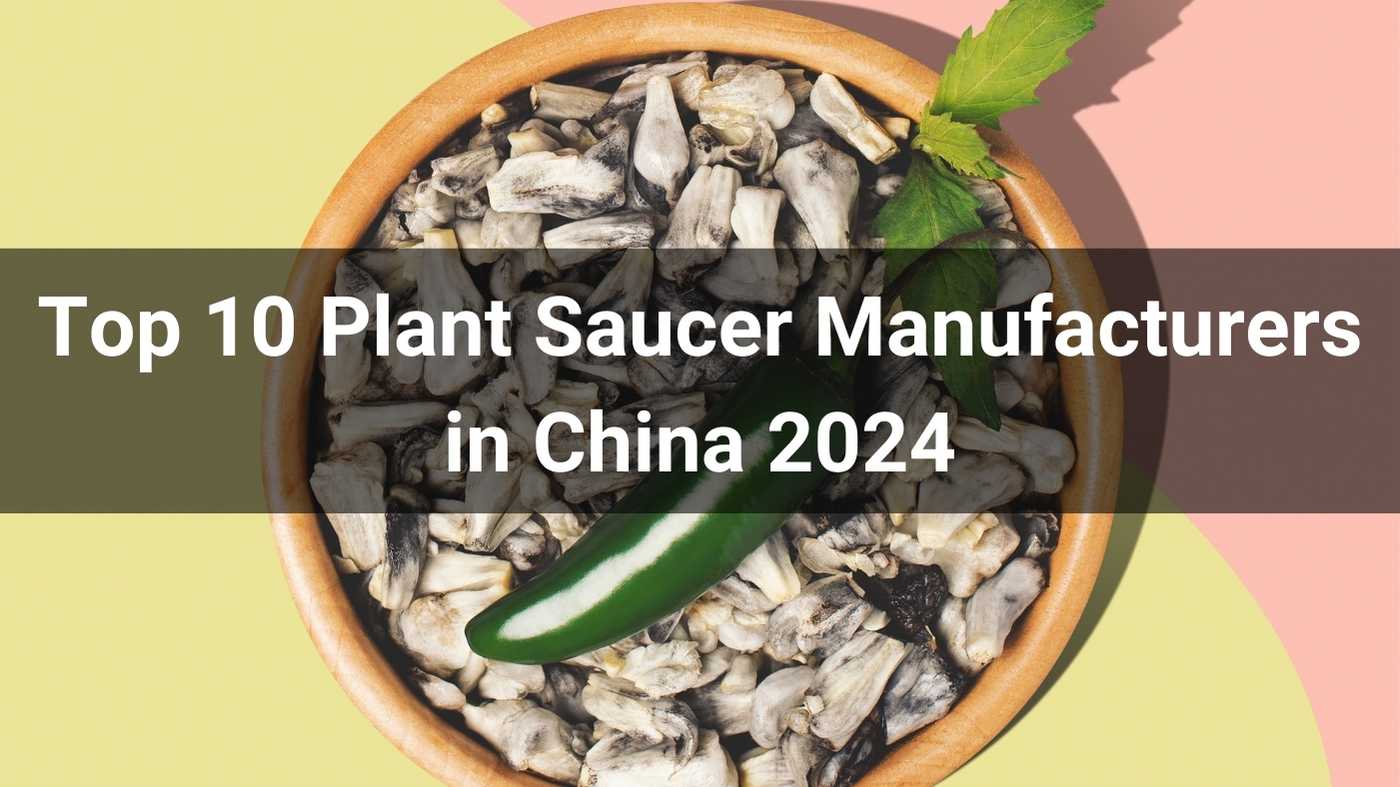
Table of contents:
When venturing into the world of container gardening, the choice between grow bags and plastic pots becomes a pivotal decision that can significantly influence the success of your gardening endeavors. Both options offer unique advantages, but understanding the distinctive characteristics of grow bags and plastic pots is crucial for making an informed choice tailored to your specific needs and preferences. In this exploration, we delve into the key considerations that can guide you in the selection process, ultimately helping you navigate the Grow Bags vs. Plastic Pots dilemma with confidence.
When it comes to the aeration and drainage of planting bags versus plastic pots, understanding the key differences is crucial for successful gardening. Both grow bags and plastic pots play a significant role in providing a suitable environment for plants, but their aeration and drainage properties set them apart.
Grow bags are typically made from breathable fabric materials, allowing air to reach the plant's roots more efficiently. The permeable nature of these bags promotes aeration by preventing the accumulation of excess moisture around the roots. This is particularly beneficial as it creates an oxygen-rich environment, fostering healthier root development.
Additionally, the fabric construction of grow bags facilitates excellent drainage. Excess water can easily escape through the sides of the bag, preventing waterlogging that can be detrimental to plant health. This drainage capability is especially advantageous in preventing issues such as root rot, ensuring optimal conditions for plant growth.
Grow bags often come with pre-made drainage holes, further enhancing the overall drainage capacity. Gardeners can also adjust the number and size of these holes based on the specific needs of the plants being cultivated.

The choice between grow bags and plastic pots extends beyond their physical attributes as containers; it profoundly impacts the microclimate surrounding plant roots. This distinction becomes particularly evident in the area of temperature regulation, where grow bags demonstrate a superior ability to create a controlled and conducive environment for plant growth.
Grow bags stand out with their composition of breathable materials such as fabric or porous polyethylene. This inherent breathability facilitates efficient air circulation around the plant's root system. In warmer climates, where excess heat can pose challenges to plant health, grow bags prevent heat buildup that might occur in non-porous containers like plastic pots. This feature ensures a more dynamic and regulated temperature environment.
An additional advantage of grow bags lies in their insulation properties. During periods of high temperatures, the breathable material acts as a barrier, preventing the soil from becoming excessively warm. Conversely, in cooler weather, the insulation helps retain heat, creating a stable and favorable environment for plant roots. This adaptability allows gardeners to cultivate a variety of plants throughout different seasons without the risk of temperature-related stress.
Unlike plastic pots, which, due to their non-porous nature, can lead to soil overheating, grow bags mitigate this issue with their breathable construction. They allow excess heat to escape through the sides, preventing the soil from reaching extreme temperatures that could negatively impact root systems. This ensures a more temperate and comfortable environment for plants, especially in direct sunlight.
The temperature-regulating properties of grow bags make them well-suited for year-round gardening. In hot seasons, they help prevent overheating, and in colder weather, the insulation properties assist in maintaining a stable soil temperature. This adaptability minimizes the likelihood of thermal shock and reduces the risk of root stress. The controlled temperature environment created by grow bags promotes consistent and healthy plant growth, contributing to overall plant well-being.
Grow bags play a crucial role in creating a conducive environment for plant root development, offering unique advantages that contribute to healthier and more robust root systems. The breathable fabric materials of grow bags promote superior aeration around the plant roots, ensuring they receive an adequate supply of oxygen for optimal growth. The inclusion of drainage holes in grow bags helps prevent overwatering, allowing excess water to escape and maintaining the right balance of moisture in the soil. This drainage feature is essential for preventing issues like root rot and supporting a healthy root environment.
Grow bags further encourage natural root pruning, preventing roots from becoming pot-bound. This process stimulates the growth of new, healthy roots and avoids the circling roots commonly observed in traditional plastic pots. Additionally, the breathable sides of grow bags promote air pruning, contributing to the development of a more extensive and well-distributed root system.
The lightweight and flexible nature of grow bags allow for versatile placement, enabling optimal positioning of plants for sunlight exposure and root growth. Whether on a balcony, terrace, or in a garden bed, the adaptability of grow bags ensures that plants can establish strong root systems regardless of the gardening space's size or configuration.
Grow bags offer unparalleled flexibility in gardening, proving to be incredibly adaptable even when not in active use. Their unique design allows for efficient storage, making them a practical choice, especially during off-season periods.
When grow bags are not in use, gardeners can take advantage of their collapsible nature. Emptying and folding the bags is a straightforward process, and even with a substantial quantity of grow bags, they can be reduced to nearly imperceptible volumes during storage. This foldable feature is particularly advantageous for gardeners with limited space, providing a convenient solution to free up room when grow bags are not actively contributing to plant growth.
As you clear and fold away your grow bags during the off-season, you're essentially creating a storage solution that is both space-saving and visually unobtrusive. This is especially beneficial for those who may need to reclaim gardening space for other purposes or simply want a tidy and organized storage area.
When the time comes to use the grow bags again, their unique design ensures that they remain in excellent condition while awaiting your next gardening endeavor. Whether you're storing them for a few weeks or several months, grow bags maintain their integrity, and when unfolded and filled with soil, they are ready to support plant growth just as effectively as they did before. This reusability factor adds to their appeal, allowing gardeners to utilize the same grow bags over many years, contributing to both cost-effectiveness and sustainability in gardening practices.

1. Limited Aesthetic Appeal:
Grow bags may not be as visually appealing as traditional pots or containers. The fabric material, while functional, might not provide the aesthetic look that some gardeners desire for their outdoor spaces. This can be a consideration for those prioritizing the overall appearance of their garden.
2. Susceptibility to Physical Damage:
Grow bags, especially those made of thinner materials, can be more susceptible to physical damage. Sharp objects or rough handling may puncture or tear the fabric, compromising its integrity. This vulnerability can limit the lifespan of the grow bag and potentially impact plant health.
3. Dependence on External Support:
Grow bags require additional external support when placed in certain settings. If they are not properly supported, especially when filled with soil, they may lose their shape or collapse. This dependency on external support can be a limitation in situations where a more self-sufficient container is preferred.
4. Limited Insulation in Extreme Temperatures:
While grow bags offer some insulation, they may not provide the same level of protection to plant roots in extreme temperatures as heavier and more insulating containers like ceramic or plastic pots. In very hot or cold climates, this may impact the plants' resilience to temperature fluctuations.
5. Water Evaporation:
Grow bags, due to their breathable nature, can lead to faster water evaporation compared to non-porous containers. This requires more frequent watering, especially in warm and dry conditions. Gardeners need to be attentive to moisture levels to ensure optimal plant hydration.
6. Mobility Challenges When Full:
Once filled with soil, grow bags can become heavy, and moving them around may be challenging, particularly for larger bags or those in awkward locations. This can be a consideration for gardeners who anticipate the need for frequent relocation.
7. Limited Long-Term Durability:
While grow bags are reusable, their long-term durability may be less than that of some traditional containers. Factors such as exposure to sunlight, frequent folding and unfolding, and the quality of the material can influence how well grow bags withstand the test of time.
The durability of plastic basins is a testament to their ability to withstand various challenges and maintain their structural integrity over time. These basins excel in impact resistance, making them resilient to accidental drops and ensuring long-term use without compromising their strength. Additionally, their resistance to corrosion and rust sets them apart from metal containers, allowing plastic basins to endure exposure to moisture and corrosive substances.
Whether used indoors or outdoors, plastic basins demonstrate exceptional weather endurance. They remain stable in the face of sunlight, rain, and temperature fluctuations, making them a reliable choice for diverse environmental conditions. The chemical resilience of plastic basins further enhances their durability, enabling them to withstand exposure to a variety of substances without undergoing deterioration.
A unique feature of plastic basins is their lightweight yet durable construction. This design not only facilitates easy handling but also ensures a balance between portability and long-lasting performance. Many plastic basins are equipped with UV stabilizers, providing protection against the harmful effects of ultraviolet rays and preserving their structural integrity even after extended exposure to sunlight.
Maintaining plastic basins is straightforward, as they are easy to clean and resist staining. This simplicity in maintenance contributes to their prolonged durability and ensures that they remain visually appealing over time. In essence, the enduring durability of plastic basins makes them a reliable and versatile choice for a wide range of applications, from household use to industrial settings.
Plastic basins offer a wide range of sizing options, catering to diverse needs and applications. This versatility in size is a key attribute that contributes to the popularity and practicality of plastic basins. Whether for household use, industrial purposes, or specific projects, the availability of various sizes ensures that users can find the perfect plastic basin to meet their requirements.
From compact basins suitable for smaller tasks or limited storage spaces to larger, more capacious options for substantial applications, the spectrum of sizes allows users to choose according to the volume and dimensions needed. This adaptability makes plastic basins suitable for an extensive array of tasks, including cleaning, storage, gardening, and various industrial processes.
The diverse sizes of plastic basins also make them convenient for organizing items, collecting materials, or containing liquids. Small plastic basins may be ideal for activities like handwashing or storing small items, while larger basins can serve as effective containers for cleaning supplies, garden tools, or larger quantities of materials.
Moreover, the availability of various sizes enhances the flexibility of plastic basins in different settings. They can be employed in kitchens, bathrooms, workshops, and outdoor spaces, adapting seamlessly to the specific requirements of each environment.

The aesthetics of plastic basins encompass a balance between practical functionality and visual appeal. While plastic is often chosen for its utilitarian benefits, modern designs and manufacturing techniques have elevated the aesthetic qualities of plastic basins, making them suitable for various settings.
1. Design Variety:
Plastic basins come in a diverse array of designs, ranging from classic and simple styles to more contemporary and innovative shapes. This variety allows users to choose basins that complement the aesthetic theme of their space, whether it's a traditional kitchen, a modern bathroom, or an outdoor garden area.
2. Color Options:
The availability of plastic basins in a spectrum of colors adds a vibrant and personalized touch to their aesthetics. Users can select basins that match or accentuate the color scheme of their surroundings, contributing to a cohesive and visually pleasing environment.
3. Transparency and Clarity:
Some plastic basins are designed with transparency or clarity, providing a unique aesthetic element. Clear or translucent plastic basins allow for visibility of the contents, adding a visually interesting dimension, especially when used for decorative purposes or displaying colorful items.
4. Sleek and Streamlined Shapes:
Many plastic basins feature sleek and streamlined shapes that contribute to a modern and clean aesthetic. These designs are well-suited for contemporary interiors and convey a sense of simplicity and efficiency.
5. Textures and Patterns:
Texture and pattern options further enhance the aesthetics of plastic basins. Some basins may have textured surfaces or embossed patterns, adding visual interest and tactility. These details elevate the basin's appearance beyond mere functionality.
6. Seamless Integration:
Plastic basins are designed to seamlessly integrate into various spaces. Whether they are used in bathrooms, kitchens, utility rooms, or outdoor areas, their adaptable designs ensure they harmonize with the overall aesthetic of the surroundings.
7. Customization and Personalization:
The versatility of plastic allows for customization and personalization. Users can easily modify or decorate plastic basins to align with their individual tastes, adding decals, stickers, or other embellishments to create a unique and personalized aesthetic.
1. Durability Concerns:
Plastic basins may not be as durable as containers made from more robust materials, such as metal or ceramic. They can be prone to scratches, cracks, or warping, particularly when subjected to heavy use or exposure to harsh conditions.
2. Heat Sensitivity:
Plastic has a lower tolerance for heat compared to materials like metal or glass. Placing hot objects in plastic basins can lead to warping or melting, compromising their structural integrity. This limitation makes plastic basins less suitable for certain high-temperature applications.
3. Staining and Odor Absorption:
Some plastics may be susceptible to staining, especially when in contact with certain substances. Additionally, plastic can absorb odors over time, which may be a concern if the basin is used for tasks involving strong-smelling materials.
4. Environmental Impact:
Many plastics are derived from non-renewable resources, and their production and disposal can contribute to environmental issues. Some plastic basins may not be easily recyclable, adding to concerns about sustainability and environmental impact.
5. Limited Aesthetic Appeal:
While efforts have been made to improve the aesthetics of plastic basins, they may not offer the same visual appeal as containers made from alternative materials like ceramic or stone. This can be a consideration for those prioritizing the aesthetic aspect of their space.
6. Potential Chemical Leaching:
Certain plastics may contain chemicals that can leach into the contents of the basin, especially when exposed to heat. This can be a concern if the basin is used for food preparation or storage, as it may impact the safety of the items stored in the container.
7. Weight Limitations:
Plastic basins may have weight limitations, and exceeding these limits can lead to structural issues such as warping or breakage. This limitation may impact their suitability for certain heavy-duty applications.
8. Limited Insulation:
Plastic has lower insulation properties compared to materials like ceramic. As a result, plastic basins may not effectively retain temperature for hot or cold contents, affecting their suitability for specific uses.

1. Material Composition:
Grow Bags: Typically made of breathable fabric or porous polyethylene, promoting air circulation around plant roots.
Plastic Pots: Made of non-porous materials like plastic, which may affect air exchange and water drainage.
2. Aeration and Drainage:
Grow Bags: Known for excellent aeration and drainage due to their breathable material, preventing waterlogged soil.
Plastic Pots: May require additional drainage holes to prevent water accumulation and ensure proper aeration.
3. Temperature Regulation:
Grow Bags: Provide better temperature control, preventing soil overheating in warm weather and offering insulation in colder conditions.
Plastic Pots: Tend to heat up more in direct sunlight, potentially impacting soil temperature.
4. Portability:
Grow Bags: Lightweight and easily foldable, making them convenient for transportation and storage during off-seasons.
Plastic Pots: Heavier and less flexible, which can be a consideration for those who need to move or store containers frequently.
5. Root Pruning and Air Pruning:
Grow Bags: Encourage natural root pruning and air pruning, preventing roots from becoming pot-bound and promoting a healthier root system.
Plastic Pots: May lead to circling roots and pot-bound plants over time if root pruning is not managed.
6. Aesthetic Preferences:
Grow Bags: Considered by some as less visually appealing, but the focus is often on functionality.
Plastic Pots: Come in various colors and designs, providing more options for those who prioritize aesthetics in their garden.
7. Cost and Affordability:
Grow Bags: Generally more cost-effective than plastic pots, making them an economical choice for budget-conscious gardeners.
Plastic Pots: Can vary in price based on material, size, and design, offering a range of options for different budgets.
8. Reusability and Longevity:
Grow Bags: Reusable and can last for several seasons with proper care, but may not be as durable as some plastic pots.
Plastic Pots: Can be more durable and have a longer lifespan, especially if made from high-quality materials.
9. Specific Plant Needs:
Grow Bags: Suitable for a wide range of plants, especially those that benefit from good aeration and drainage.
Plastic Pots: Versatile and suitable for various plants, but extra attention to drainage may be needed for some species.
10. Environmental Impact:
Grow Bags: Often considered more environmentally friendly as they are typically made from recyclable materials.
Plastic Pots: Environmental impact can vary, and some plastics may not be easily recyclable.

In the vibrant realm of gardening, the debate between grow bags and plastic pots is not merely a choice of containers; it's a nuanced decision that impacts the very essence of your plants' growth. Whether you opt for the breathable innovation of grow bags or the sturdy familiarity of plastic pots, each vessel holds its own set of advantages and considerations.If you have any questions about choosing between the two, please contact Linkwin to solve your problems and provide high-quality products and services!











We use cookies to make the website work, to provide advanced features, social media and traffic analysis, and we use analytics and third-party advertising cookies. If you choose to click "Deny All", you will retain the default setting of not allowing the use of cookies or other tracking tools other than technical tools.

